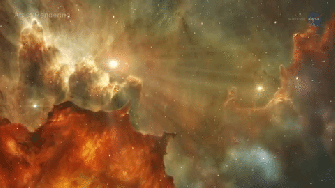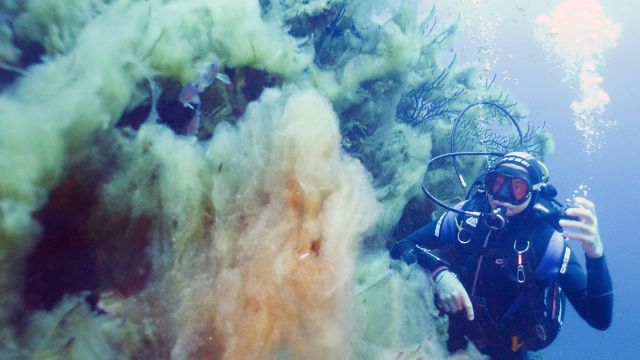NASA Now Has Its Own GIF Channel, and It’s Too Much Fun

Image source: NASA
NASA does so many amazing things it’s easy to take the organization for granted. It’s also expensive, so it’s regularly on the chopping block when it comes time to do the annual federal budget and this time, once again, there’s talk of gutting the agency. We hope this doesn’t happen, of course: we love science.
The space agency has just debuted their own animated gif channel on Giphy, and it’s got a lot of spectacular stuff. Some is imagery from missions, and some are artist’s renderings. In either case, they’re a fun way to learn more about NASA achievements. They also make great text and email attachments with which you can share your enthusiasm for cutting-edge scientific advancements and space exploration.
(All images in this post are from NASA’s Giphy channel.)
Life on Mars? Let’s Hope It’s Not Like This.

Omigod, it’s looking right at us!!! This accidental formation was captured by the Mars Reconnaissance Orbiter circling the red planet in January 2008.
What the James Webb Space Telescope Will See

This eye-popper is a gif NASA pulled from their cool video of the James Webb Space Telescope scheduled for launch on 2018. It’s an artists’s conception of the type if things the JSWT will be able to see. As an infrared telescope, it’ll be able to pick up heat from stars and galaxies millions and even billions of light years away. It’ll give us our best look yet into the universe’s past. JWST still being built at Godard Space Center, and there’s a webcam watching its progress.
Mercury

This is from NASA’s MESSENGER (MErcury Surface, Space ENvironment, GEochemistry, and Ranging) mission to Mercury that ran from 2004 to 2015, when the craft was de-orbited into Mercury. It arrived at the planet in 2011 and had completed its primary objectives by 2012.
Liquids in Zero-G

Well, what more need we say? Astronauts have had lots and lots of fun with liquids freed from the bonds of gravity.
Black Holes Collide

It was big news when the first gravitational waves were observed back in September 2015. They were apparently emitted during the collision of two back holes more than a billion years ago. This gif shows what the collision may have looked like.
Our Hot, Hot Sun and a Visitor

This gif comes from NASA’s Solar Dynamics Observatory. That little black thing crossing the blazing sun? Venus.
Our Lights and Nature’s

This beautiful image of our own planet at night was taken from the International Space Station. Those are our lights rushing past below, and an aurora on the horizon. Magical place, huh?
DNA in Space

NASA’s interested aren’t confined to what’s out there, and scientists have been finding out all sort of things by conducting work in all sorts of fields such as genetic sequencing in zero-gravity.
CATS in Space

No, not “cats,” “CATS,” short for “Cloud-Aerosol Transport System.” NASA’s meteorological and atmospheric tracking are invaluable to our understanding of weather and climate change, and CATS measures clouds and aerosols in the atmosphere. This gif from a NASA video represents the way in which CATS tracks “the height, thickness, and extent of smoke, dust particles, and volcanic ash in the atmosphere.”
Win

Rocket science is hard, and things often go wrong. There’s incredible math involved, engineering genius, zero-flaw manufacturing, and it all requires masterful mission control. And when everything goes as planned? Well, here’s what happened when Curiosity safely touched down on Mars.





